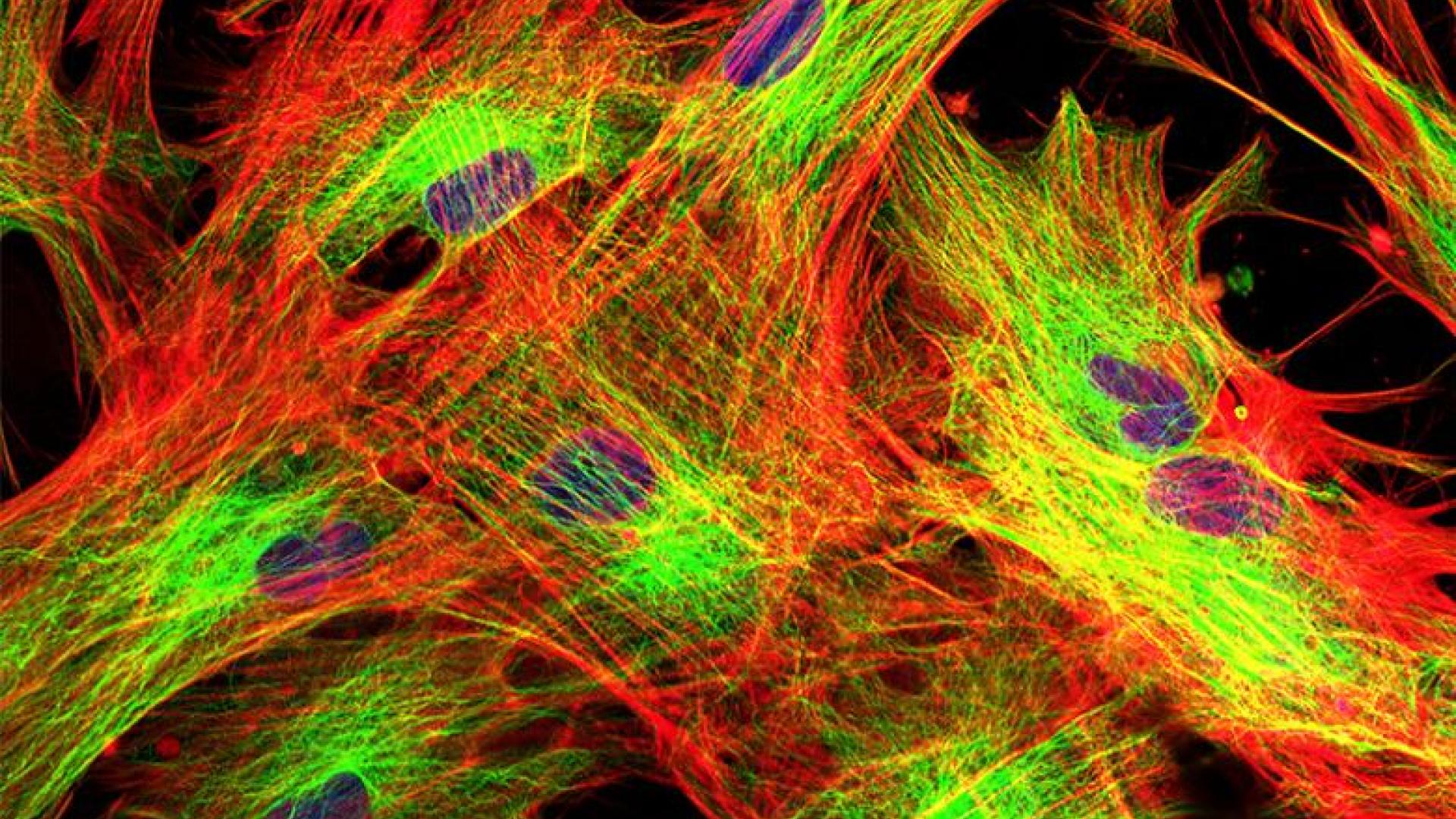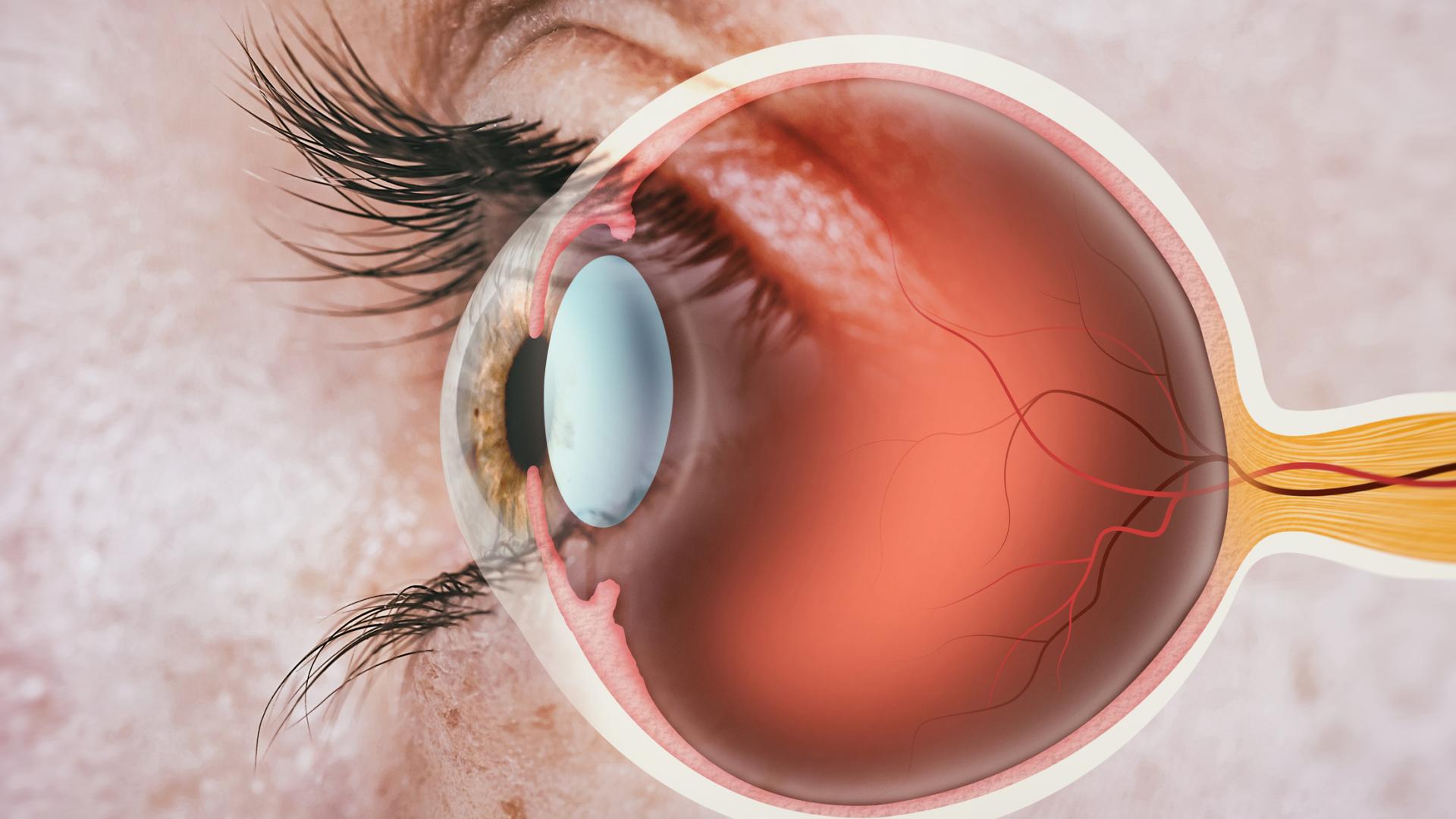
Our understanding of the genetic risk factors underlying glaucoma has greatly increased in the past decade due to national and international research efforts. Learn about the genetic factors that can influence the early- and late-onset forms of glaucoma.
The Family Connection
Those with first-degree blood relatives who have glaucoma do indeed have an increased risk of developing this eye disease compared to the general population. The National Eye Institute encourages people with a high risk for glaucoma to have a comprehensive dilated eye exam at least once every two years. The risk group includes African Americans over age 40; everyone over age 60, especially Mexican Americans; and people with a family history of the disease. Early detection can be very beneficial in preventing vision loss due to glaucoma.
Glaucoma Genetics and Personalized Medicine
In recent years, our knowledge of the genetic risk factors for various forms of glaucoma has expanded considerably. This is exciting for several reasons.
-
- For some forms of early-onset glaucoma (to be discussed below), genetic testing is already available and can help with diagnosis and genetic counseling for parents-to-be.
-
- Although there are no gene-directed treatments or cures available currently, there are some forms of glaucoma in which our understanding of the gene mutations may one day lead to personalized treatments for those patients harboring these specific gene mutations.
-
- As research progresses and more genetic risk factors are identified, it may be possible to offer patients personalized glaucoma risk assessments and/or treatments.
The Gene Culprits
The genetic risk factors that underlie early-onset glaucoma (diagnosed at age 35 or earlier) have been fairly well-studied.
Congenital Glaucoma
We know that primary congenital glaucoma, a form of glaucoma diagnosed in infancy, can be caused by mutations in CYP1B1 or LTBP2 (other genes such as MYOC, FOXC1, and COL1A1 have also been identified in congenital glaucoma). Mutations in CYP1B1 and LTBP2 genes can lead to glaucoma inherited in an “autosomal recessive” fashion where both parents are carriers of the mutation but do not have glaucoma. Some of their children, however, may inherit both copies of the mutation (one from each parent), which results in the child having glaucoma. Signs of congenital glaucoma to look for in your infant or toddler include excessive tearing, avoidance of light, excessive blinking, and cloudiness of the cornea (the clear window to the eye).
Ongoing work has continued to identify new mutations underlying primary congenital glaucoma. For example, a recent study found that mutations in thrombospondin 1 (THBS1) was the underlying gene mutation in three unrelated families from diverse ethnic backgrounds. Researchers found that this gene mutation caused abnormal accumulation of the thrombospondin protein in the cells that compose the drainage system.
Developmental Glaucoma
Another type of childhood glaucoma is developmental glaucoma that is associated with mutations in genes that are involved in the development of the eye. These children often have abnormalities in the front part of the eye, and in structures that drain the eye fluid. Some of the genes associated with these different forms of developmental glaucoma include PITX2, PAX6, and FOXC1.
Mutations in these genes are inherited in an “autosomal dominant” fashion in which 50 percent of the children in the family may be affected because only one copy of the mutated gene needs to be inherited in order for the glaucoma to be apparent.
Myocilin Mutations
Another type of childhood glaucoma is developmental glaucoma, which is associated with mutations in genes that are involved in the development of the eye. These children often have abnormalities in the front part of the eye, and in structures that drain the eye fluid. Some of the genes associated with these different forms of developmental glaucoma include PITX2, PAX6, FOXC1, TEK, ANGPT1, and CPAMD8.
Mutations in these genes may be inherited in an “autosomal dominant” fashion, where 50% of the children in the family may be affected because only one copy of the mutated gene needs to be inherited for the glaucoma to be apparent. Other families will pass the gene mutations in an “autosomal recessive” fashion.
Genetic Testing
For all these forms of childhood or early onset glaucoma it is important to have discussions with a genetic counselor, who can help you understand the results of any genetic testing. It is also best to talk first with your ophthalmologist about genetic testing. If genetic testing is warranted, your ophthalmologist or genetic counselor would order the test and walk you through the steps of obtaining a sample to send.
Age-Related Open-Angle Glaucoma
What about age-related open-angle glaucoma that affects the majority of patients who have glaucoma? Most patients with this common form of glaucoma do not have just one gene mutation that causes the disease. Rather, it is likely that there are multiple gene variants that confer risk to having the disease.
However, there are some mutations that do seem to directly cause glaucoma, such as the myocilin gene described above. Patients with primary open angle glaucoma and low eye pressures, with a strong family history of glaucoma, may also carry mutations in the optineurin and TBK1 genes. Altogether, these types of mutations are though to account for less than 5% of primary open-angle glaucoma cases.
Thus, most patients with primary open-angle glaucoma do not have single gene mutations but rather genetic variants that may increase the risk for glaucoma. Recent studies collected samples from tens of thousands of glaucoma patients and compared them to patients without glaucoma and have identified several genetic variants or genes that confer some risk for open-angle glaucoma.
These include CDKN2B-AS, SIX1/SIX6, TMCO1, CAV1/CAV2, and others. The CDKN2B-AS gene and a region on chromosome 8 were identified to be associated with normal-tension glaucoma, where people have glaucoma, but do not have elevated eye pressure.
The take home message is that recent research has opened avenues to our understanding of the underlying genetics of common forms of adult-onset glaucoma. However, it is not as straightforward as a single gene mutation leading to glaucoma, so at this point there is no genetic testing recommended for the common forms of adult-onset primary open-angle glaucoma. Direct to consumer testing such as 23andMe is not recommended for glaucoma patients. In the future, however, there may be new genetic testing strategies.
Age-Related Open-Angle Glaucoma
What about age-related open-angle glaucoma that affects the majority of patients who have glaucoma? It is known that this common form of glaucoma does not have just one gene mutation that causes the disease. Rather, it is likely that there are multiple gene variants that confer risk to having the disease.
Recent studies collected samples from tens of thousands of glaucoma patients and compared them to patients without glaucoma, and have identified a number of genetic variants or genes that convey some risk for open-angle glaucoma.
These include CDKN2B-AS, SIX1/SIX6, TMCO1, and CAV1/CAV2. Indeed, the CDKN2B-AS gene and a region on chromosome 8 were identified to be associated with normal-tension glaucoma, where people have glaucoma, but do not have elevated eye pressure.
The take home message is that recent research has opened up avenues to our understanding of the underlying genetics of common forms of adult-onset glaucoma. However, it is not as straightforward as a single gene mutation leading to glaucoma, so at this point there is no genetic testing recommended for the common forms of adult-onset primary open-angle glaucoma. In the future, however, there may be new genetic testing strategies that examine multiple genes.
Summary
If you have family members with glaucoma, it is recommended that you have a comprehensive dilated eye exam. If those family members with glaucoma have had surgery or have become blind, it is even more important for you to undergo routine eye exams so that if you do have the disease, it is caught at an early stage. Finally, if you have glaucoma, let your family members know about your diagnosis so that they have a comprehensive dilated eye examination. Patients who are diagnosed with early-stage glaucoma fare much better than patients who are diagnosed at a late stage of the disease.
About BrightFocus Foundation
BrightFocus Foundation is a premier global nonprofit funder of research to defeat Alzheimer’s, macular degeneration, and glaucoma. Since its inception more than 50 years ago, BrightFocus and its flagship research programs—Alzheimer’s Disease Research, Macular Degeneration Research, and National Glaucoma Research—has awarded more than $300 million in research grants to scientists around the world, catalyzing thousands of scientific breakthroughs, life-enhancing treatments, and diagnostic tools. We also share the latest research findings, expert information, and resources to empower the millions impacted by these devastating diseases. Learn more at brightfocus.org.
Disclaimer: The information provided here is a public service of BrightFocus Foundation and is not intended to constitute medical advice. Please consult your physician for personalized medical, dietary, and/or exercise advice. Any medications or supplements should only be taken under medical supervision. BrightFocus Foundation does not endorse any medical products or therapies.
- Genetics
- Risk Factors









